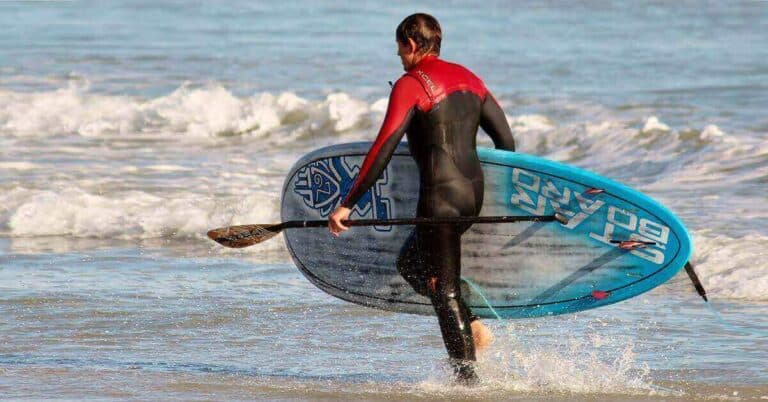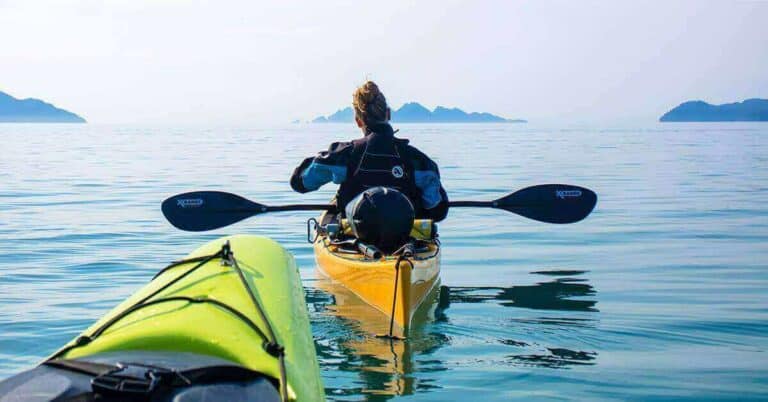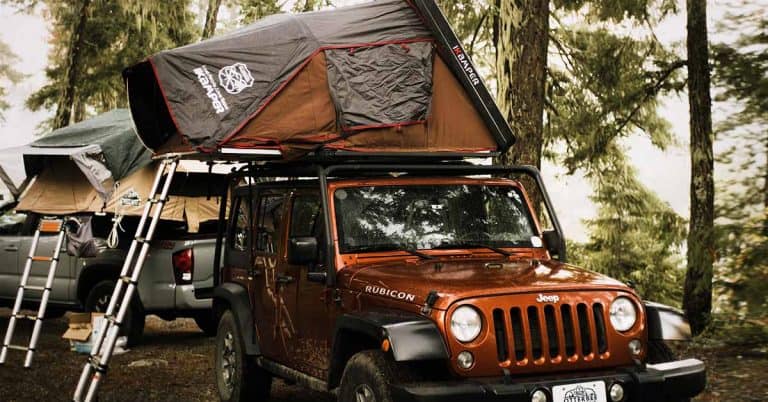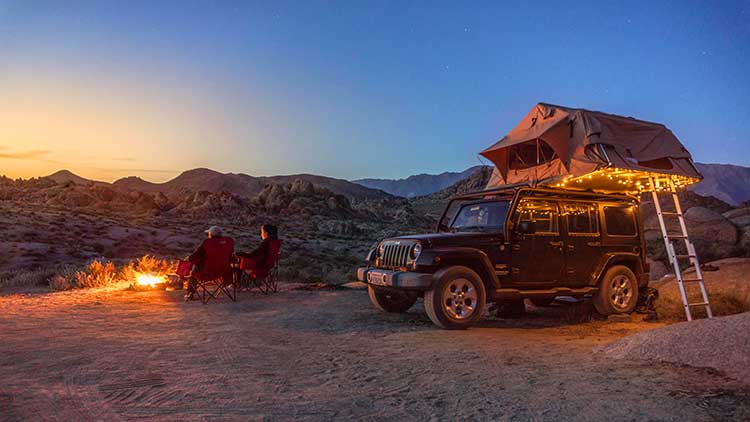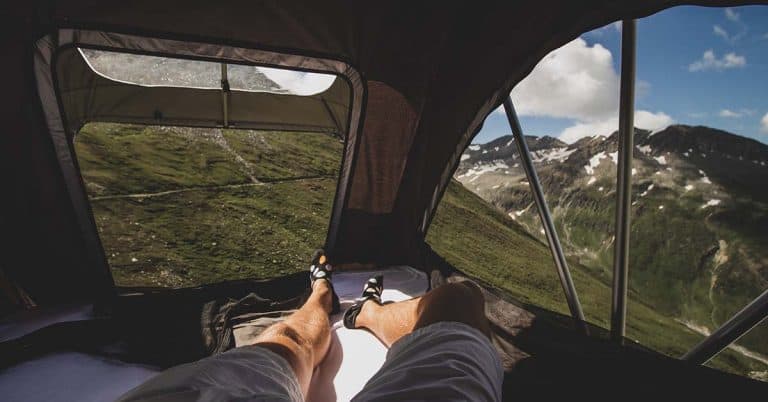Disclosure: I am compensated for purchases made through some links on this site. Click for details.
The difference between 3-season tents and 4-season tents… Four-season tents are designed to handle winter weather.
But is a 4-season tent good in all four seasons? After all, winter outdoor gear isn’t always a good fit for the summer months.
Let’s look at the weather conditions that 3-season and 4-season tents are designed to handle. Knowing the capabilities of each tent will help you determine the best tent for your camping trip.
3-Season Tents
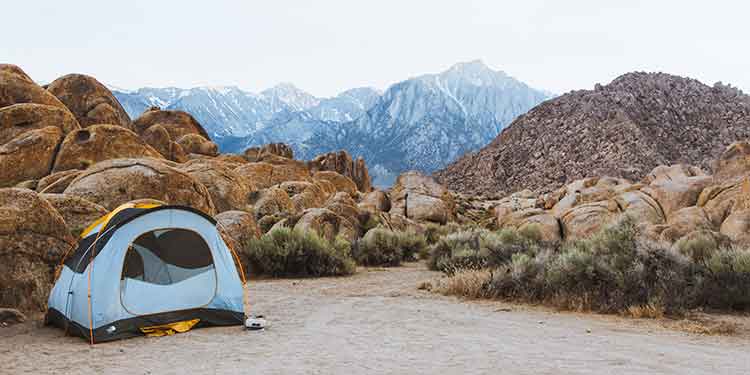
Three-season tents are the most popular tent choice. Their lightweight construction and breathability make them ideal camping shelters for moderate weather conditions in spring, summer, and fall.
Most 3-season tents are made to handle moderate rain, short-term exposure to downpours, and light snow. They are not designed to withstand heavy wind, rain, or snow.
The weight of a 3-season tent will vary on size, options, and type. There are ultralight backpacking tents to sturdier, family-size, front-country camping tents.
Common Features of 3-Season Tents
Easy Setup: With one or two lightweight, aluminum poles, most 3-season tents are simple to set up and take down.
Three-Season Tent Setup:
- Spread out the tent on level ground away from trees that could drop limbs or other debris.
- Orient the entrance of the tent in the desired direction.
- Stake down the tent corners.
- To erect the tent, attach the pole or poles to the body of the tent. Attachment clips and pole sleeves are common attachment methods.
- Attach the rainfly if desired.
Lightweight: Three-season tents are constructed from lightweight fabric and supported by a minimal number of poles that are generally lighter and thinner than those included with 4-season tents. Their lightweight design makes them sturdy enough for moderate weather in spring, summer, and fall, however, 3-season tents are not designed to support the buildup of snow on the tent or for extreme winds.
Ventilation: Three-season tents have mesh panels to keep you cooler in warmer temperatures while keeping insects out. This airflow also prevents condensation from forming on the inside of the tent.
The optional rainflies of 3-season tents are also designed to accommodate airflow. They install above the ground allowing air to flow under and through the mesh panels of the tent.
Waterproof: Three-season tents are designed to be waterproof. Waterproof materials, a sealed base, protected seams, covered zippers, and rainfly work together to keep water out.
Moderate+ Wind Stability: Most 3-season tents are capable of handling moderate and higher wind speeds. I have a Colman dome tent like this one at Bass Pro Shops that are designed to withstand wind speeds of 35+ MPH.
4-Season Tents
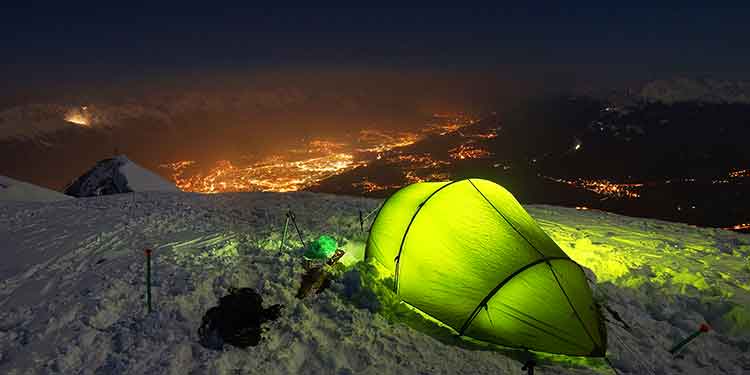
The term “4-season tent” is a misnomer. Four-season tents are shelters designed to withstand the extreme weather conditions of winter or higher altitudes above the treeline. It would be better to think of them as a winter tent.
Four-season tents, like this MSR Guideline Pro 2 Tent, use sturdier poles and more of them along with heavier more durable fabric than 3-season tents. These materials along with the shape of these tents allow it to better hold up to high winds and heavy snow.
Four-season tents are not as comfortable as 3-season tents in milder weather due to their lack of ventilation. Not only do these tents have thicker fabric that traps heat, but they also have few to no mesh panels and a rainfly that extends to the ground to reduce ventilation.
The weight of a 4-season tent is bulkier and heavier than its 3-season counterpart.
Common Features of 4-Season Tents
Sturdy: Four-season tents use a network of sturdy poles along with heavier more durable fabric than 3-season tents and pole sleeves may be built into the tent fabric for added stability over just attachment clips alone. These features along with its dome shape help 4-season tents hold up better in high winds and heavy snow.
Longer Setup Time: Setting up a 4-season tent is more complex which can make setup twice as long as its 3-season counterpart.
Larger Rainflies: The rainflies of 4-season tents extend to the ground to combat wind forces and reduce the possibility of wind flowing into the tent.
Vestibules: It’s easy to track snow inside a tent in winter. Four-season tents have vestibules that provide a transition area for reducing heat loss and storing gear (especially snow-covered gear) outside the main area of the shelter. Keeping moisture outside the main area also helps reduce the possibility of condensation in the tent.
Lacks Ventilation: Four-season tents are made from stronger, thicker, more durable fabric with few to no mesh panels. The thicker fabric and lack of mesh openings in combination with the rainfly and vestibule reduce ventilation to keep fridged winds outside and promote a warm, dry interior. This lack of breathability can make use of the tent outside winter weather uncomfortably warm and stuffy.
Waterproof: Four-season tents like 3-season are designed to be waterproof. Waterproof materials, a sealed bathtub-like base, protected seams, covered zippers, and a rainfly that extends to the ground function to keep snow and water out.
Bold Colors: Many manufacturers design 4-season tents in bright, bold colors so these winter tents can be easily located by campers in storms or by rescuers in times of emergency.
Can a 3-Season Tent Be Used in Winter? Or a 4-Season Tent In Summer?
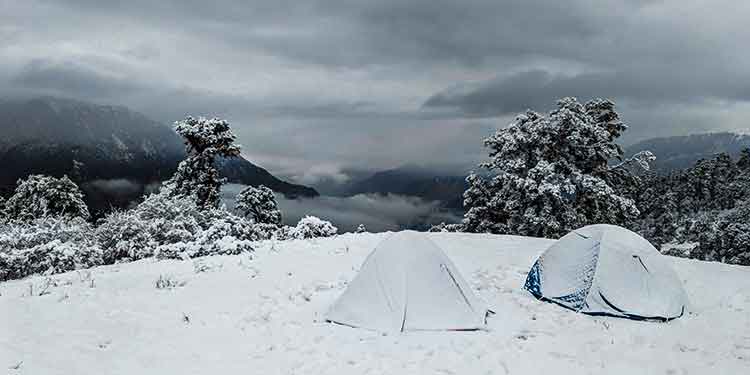
Yes. Sort of…
Three-season and 4-season tents can both be used in all seasons if the environment and weather conditions remain within the design capacity of the tent.
Three-season tents, however, are not likely to provide as much protection in the fridged winter months or above the treeline.
And 4-season tents are not likely to be as comfortable in warmer temperatures. The lack of ventilation will make the tent stuffy, hot, and uncomfortable. The ventilation issue will also increase the possibility of condensation when used outside the low temperatures of winter.
Is a 3-Season or 4-Season Tent Right for You?
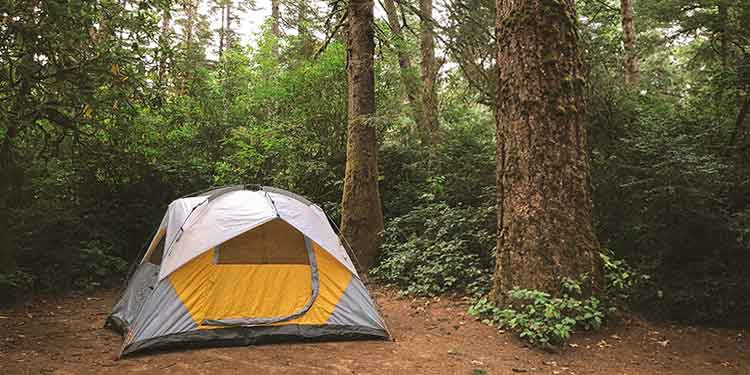
Three-season tents are the most popular for the average camper and backpacker who are not likely to be camping in inclement weather conditions.
If you primarily plan to camp in the spring, summer, and fall in moderate weather conditions, you’ll want a 3-season tent. It will save on weight and its ventilation capabilities will keep you cooler when it’s warmer.
If you plan to camp in freezing weather conditions, during a snowfall, in high wind conditions, or above the tree line, you should consider a 4-season tent. They are more expensive than 3-season tents but well worth the investment for the added durability, safety, and comfort. Will you be backpacking in winter or mountaineering? There are some lightweight options specifically made with you in mind.
If you enjoy camping year-round, an investment in both tents would be your best choice.
Related Content: Hiking, Trekking, Backpacking & Mountaineering: Differences?


